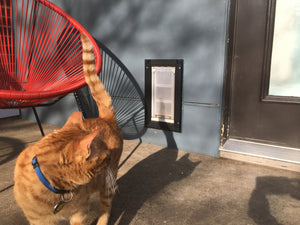The Truth about Spaying and Neutering
Dear Readers, Today I’d like to discuss one of the most controversial subjects in responsible pet ownership: Whether or not to spay or neuter your male and female pets. This article aims to take a completely objective approach and breakdown the facts about the various health benefits and drawbacks. We'll talk about behavior changes, pet overpopulation, health problems, and general animal welfare community observation. If you just want the short version, jump down to the summary. Otherwise, read on!
What is Spay/Neuter and how is it performed?
Most of you already know the answer to the first part of this question. In general terms, it is the process of rendering your animal sterile through the removal of certain sexual organs, namely the testicles for males, and the uterus and ovaries for females. Spaying is the term used for females and neutering is used for males. It’s also been named “fixing”, desexing, castration (for males), and altering. People often wonder when to spay a dog. According to ASPCA, dogs should be spayed or neutered between six and nine months old. Cats can be operated on as early as eight weeks old. It is a mostly risk-free procedure, and your animal will usually return to normal behavior 5 - 7 days after the surgery.
Reasons people DO spay / neuter their pets

The number one reason people Spay and Neuter their pets is because of the current dog overpopulation issue. There are an estimated 6 - 8 million homeless pets entering animal shelters every year, and more than half of them are being euthanized. However, there are other benefits. In some studies, it’s been estimated that male dogs have an 18% longer life expectancy, 23% for spayed female dogs. This is due to lower rates of certain types of cancer, such as ovarian cancer, and reduced urges to roam which can expose them to fights, traffic, and other mishaps. Other benefit of neutering and spaying is behavioral modification. A neutered dog is less likely to mark territory or spray homes with urine. Other behavior problems related to a dog’s natural instinct that can be positively affected by spaying and neutering include roaming, aggression, barking, and other dominance related behaviors. Lastly, spaying or neutering can, kind of counter intuitively, reduces the cost of owning your pet. Unaltered pets usually cost more to register and cost more to renew. Additionally, caring for an intact dog or cat with mammary cancer, testicular cancer, pyometra (uterine infection), or other health problems related to sex hormones can easily run you thousands of dollars.
Reasons people DO NOT spay / neuter

There are a number of reasons people decide not to spay or neuter their dogs. One of the most common reasons is concern for early development. Sexual organs produce hormones that are crucial to the early development of animals. Another big reason is empathy. A lot of dog owners don’t want to do anything to their pet that they wouldn’t do to themselves. Expense is another reason a dog owner might feel reluctant to get their dog spayed or neutered. Many dogs come into ownership from the street. And a lot of the families who find these dogs live in impoverished conditions. Because of this, owners are deterred from getting their dog altered. Some even breed the dog and sell the puppies for more income. So how much does it cost to neuter a dog? The cost depends on the facility you go to, generally fall within this range: neutering from 45$-135$ and spaying from 50$-175$. The final reason is the health benefits from keeping a dog intact. This is an interesting reason because most people think that spaying or neutering your dog is more healthy, but once more there are contrary studies that suggest that keeping your dog intact is more healthy. Leaving your dog intact is more likely to prevent obesity, certain types of cancer, hip dysplasia, and knee injuries.




